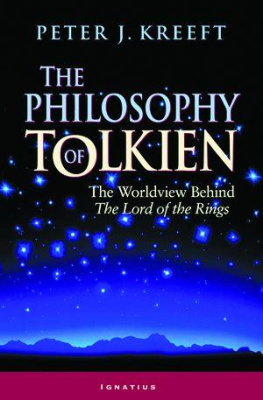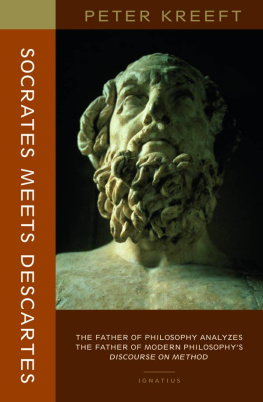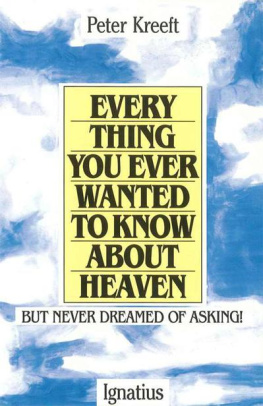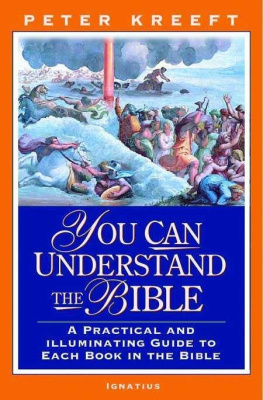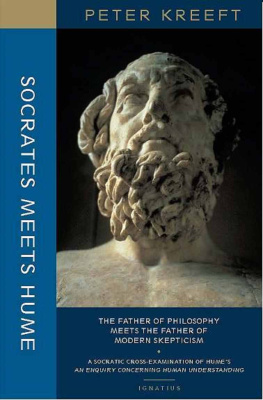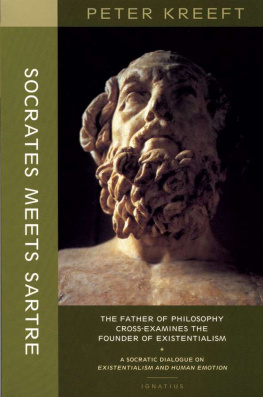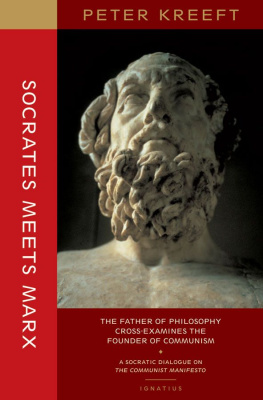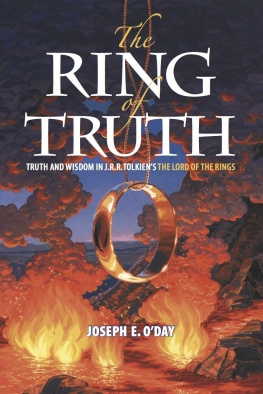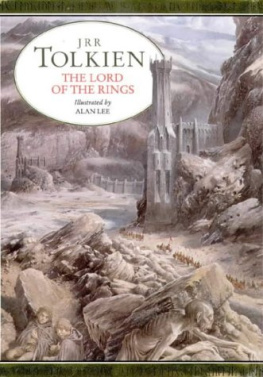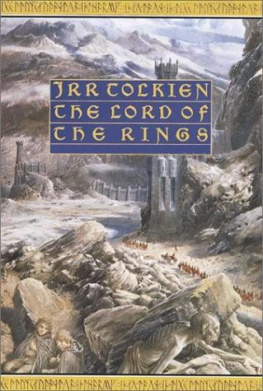THE PHILOSOPHY OF TOLKIEN
PETER KREEFT
THE
PHILOSOPHY
OF
TOLKIEN
THE WORLDVIEW BEHIND
The Lord of the Rings
IGNATIUS PRESS SAN FRANCISCO
ACKNOWLEDGMENTS
Excerpts from the works of C. S. Lewis
are copyright by C. S. Lewis Pte., Ltd., and are used by permission.
Excerpts from the works of J. R. R. Tolkien
are reprinted by permission of HarperCollins Publishers, Ltd.
Specific C. S. Lewis books for which Harcourt, Inc., has also granted permission for excerpts:
Letters to Malcolm: Chiefly on Prayer, copyright 1964, 1963 by C. S. Lewis Pte., Ltd. and renewed 1992, 1991 by Arthur Owen Barfield. The Four Loves, copyright i960 by C. S. Lewis and renewed 1988 by Arthur Owen Barfield. Poems, copyright 1964 by the Executors of the Estate of C. S. Lewis and renewed 1992 by C.S. Lewis Pte., Ltd. Surprised by Joy: The Shape of My Early Life, copyright 1956 by C. S. Lewis and renewed 1984 by Arthur Owen Barfield.
Specific J. R. R. Tolkien books for which HarperCollins Publishers, Ltd., has also granted permission for excerpts:
The Silmarillion, copyright 1977 by J. R. R. Tolkien."On Fairy-Stories", copyright 1947, 1966 by J. R. R. Tolkien. Letters of J. R. R. Tolkien, copyright 1981 by George Allen & Unwin Ltd. The Fellowship of the Ring, copyright 1954, 1965, 1966 by J. R. R. Tolkien, renewed 1993 , 1994. The Two Towers, copyright 1954, 1965, 1966 by J. R. R. Tolkien, renewed 1993, 1994. The Return of the King, copyright 1955, 1965, 1966 by J. R. R. Tolkien, renewed 1993 , 1994.
Cover photo: Corbis
Cover design by Riz Boncan Marsella
2005 Ignatius Press, San Francisco
All rights reserved
ISBN 978-1-58617-025-7
ISBN 1-58617-025-2
Library of Congress control number 20033115832
Printed in the United States of America
CONTENTS
1.1 How big is reality?
1.2 Is the supernatural real?
1.3 Are Platonic Ideas real?
2.1 Does God exist?
2.2 Is life subject to divine providence?
2.3 Are we both fated and free?
2.4 Can we relate to God by "religion"?
3.1 Are angels real?
3.2 Do we have guardian angels?
3.3 Could there be creatures between men and angels, such as Elves?
4.1 Is nature really beautiful?
4.2 Do things have personalities?
4.3 Is there real magic?
5.1 Is death good or bad?
5.2 Is romance more thrilling than sex?
5.3 Why do humans have identity crises?
5.4 What do we most deeply desire?
6.1 Is knowledge always good?
6.2 Is intuition a form of knowledge?
6.3 Is faith (trust) wisdom or ignorance?
6.4 What is truth?
7.1 Is history a story?
7.2 Is the past (tradition) a prison or a lighthouse?
7.3 Is history predictable?
7.4 Is there devolution as well as evolution?
7.5 Is human life a tragedy or a comedy?
8.1 Why do we no longer love glory or splendor?
8.2 Is beauty always good?
9.1 How can words be alive?
9.2 The metaphysics of words: Can words have real power?
9.3 Are there right and wrong words?
9.4 Is there an original, universal, natural language?
9.5 Why is music so powerful?
10.1 Is small beautiful?
10.2 Can war be noble?
11.1 Is evil real?
11.2 How powerful is evil?
11.3 How weak is evil?
11.4 How does evil work?
12.1 Do principles or consequences make an act good?
12.2 Why must we be heroes?
12.3 Can one go on without hope?
12.4 Is authority oppressive and obedience demeaning?
12.5 Are promises sacred?
13.1 What is the power of friendship?
13.2 Is humility humiliating?
13.3 What should you give away?
13.4 Does mercy trump justice?
13.5 Is charity a waste?
Can any one man incarnate every truth and virtue?
INTRODUCTION
Oh, no! Not another book on Tolkien!
Why should you read this one?
Most of us can remember where we were when certain tragic historical events occurred in America, such as 9/11, the Kennedy assassination, Pearl Harbor.
Most of us can also remember where we were when we first discovered The Lord of the Rings.
We remember the excitement of discovery. Here was a world that was real in fact, more real, more solid than the one we left when we opened the covers of that book. Those covers were magic doors, and we really walked through them into Tolkien's world. They were not just windows to peer through, like cages at a zoo. We were not tourists but natives. We knew this world. It was our own world, seen more clearly than we had ever seen it before.
Exploring Tolkien's world was not just interesting (that all-purpose meaningless euphemism). It was not even just fascinating. It was sheer joy. For we knew that here we had touched truth. This book was a homecoming. This book broke our hearts.
Subsequent readings confirmed the reality and truth of Tolkien's world, and joy rose again like the sun. No one reads The Lord of the Rings only once; and that is the clearest mark of a Great Book.
But when we read secondary sources, books about The Lord of the Rings, we do not feel the same excitement of discovery, joy, and grateful wonder. We do not smell the same sharp smell of truth, even when these books tell the truth. For we do not want someone else to tell us what Tolkien told us. We do not want summaries of Tolkien, we want Tolkien. We do not want books about Tolkien's world, we want Tolkien's world.
This book is not about Tolkien's world. It is about Tolkien's worldview, Tolkien's philosophy. Exploring that can be another adventure. For while this philosophy is as much a part of Tolkien's world as its wars, its life forms, its history, its beauties, and its terrors, the philosophy is not on the surface, as are these other things, but hidden beneath it, or behind it, or inside it, inside the things and events in the story. If The Lord of the Rings were an allegory, the philosophy would be on the surface, like rocks. Instead, it is more like the molten core of the earth: central but hidden.
Therefore this book can be a second adventure of discovery. After you read it, you will know why you knew you had touched Truth when you first read The Lord of the Rings.
Four different uses of this book
This book is four types of book in one.
First, it is a good read, and a voyage of discovery into the philosophical heart of Middle-earth.
Second, it can be used as a research tool, a concordance. The philosophical themes in The Lord of the Rings are outlined and organized into fifty questions, accompanied by numerous references to the text of The Lord of the Rings and to the three works of Tolkien's that form the most authentic commentary on it: his essay "On Fairy-Stories", The Silmarillion, and The Letters of J. R. R. Tolkien. (See pages 229ff.)
Researching is much more exciting than rehashing. I still remember the excitement of first learning to use a concordance to study the Bible. I learned far more from that than from any secondary sources. A concordance is like a laboratory manual rather than a science textbook, or like a piece of sheet music rather than a prerecorded CD, or like a cookbook rather than a plate of leftovers. It is a road map for your own travels rather than a travel journal recounting someone else's.
Third, this book can be used as an engaging introduction to philosophy. For many of the great questions of philosophy are included in the fifty-question outline, but not dressed in suits of armor, not in rigid definitions and arguments abstracted from the field of battle.
If used in a philosophy class, I suggest using it in tandem with a classic novel or poem that represents the most completely opposite philosophy, such as Jean-Paul Sartre's Nausea, Albert Camus's The Stranger, Lucretius's On the Nature of Things, B. F. Skinner's Walden Two, William Faulkner's The Sound and the Fury, or Thomas Hardy's The Dynasts.

